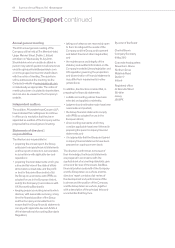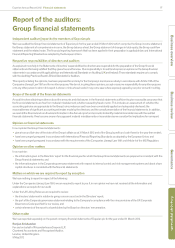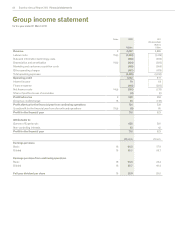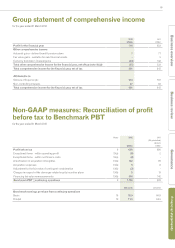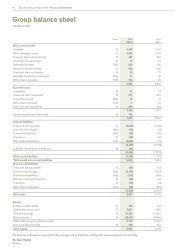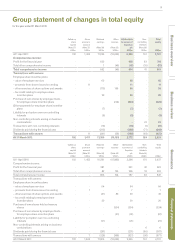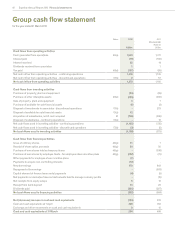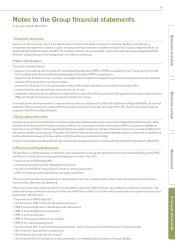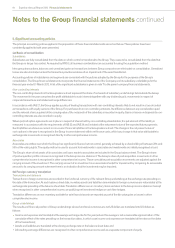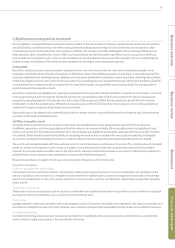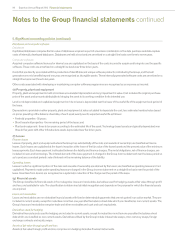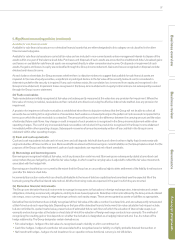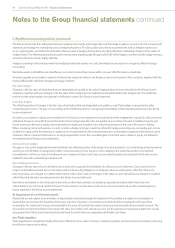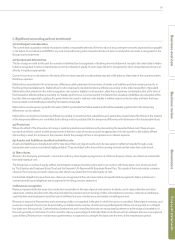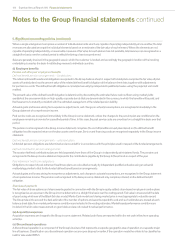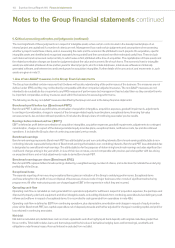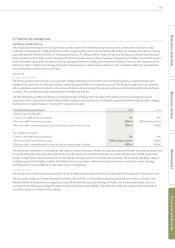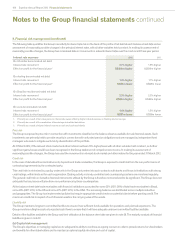Experian 2012 Annual Report Download - page 96
Download and view the complete annual report
Please find page 96 of the 2012 Experian annual report below. You can navigate through the pages in the report by either clicking on the pages listed below, or by using the keyword search tool below to find specific information within the annual report.
94 Experian Annual Report 2012 Financial statements
Notes to the Group financial statements continued
5. Significant accounting policies
The principal accounting policies applied in the preparation of these financial statements are set out below. These policies have been
consistently applied to both years presented.
(a) Basis of consolidation
Subsidiaries
Subsidiaries are fully consolidated from the date on which control is transferred to the Group. They cease to be consolidated from the date that
the Group no longer has control. As required by IFRS 3, all business combinations are accounted for using the acquisition method.
Intra-group transactions, balances and unrealised gains on transactions between Group companies are eliminated on consolidation. Unrealised
losses are also eliminated unless the transaction provides evidence of an impairment of the asset transferred.
Accounting policies of subsidiaries and segments are consistent with the policies adopted by the Group for the purposes of the Group’s
consolidation. The Group financial statements incorporate the financial statements of the Company and its subsidiary undertakings for the
financial year ended 31 March 2012. A list of the significant subsidiaries is given in note T to the parent company financial statements.
Non-controlling interests
The non-controlling interests in the Group balance sheet represent the share of net assets of subsidiary undertakings held outside the Group.
The movement in the year comprises the profit attributable to such interests together with any dividends paid, movements in respect of
corporate transactions and related exchange differences.
In accordance with IAS 27, the Group applies a policy of treating transactions with non-controlling interests that do not result in a loss of control
as transactions with equity owners of the Group. For purchases from non-controlling interests, the difference between any consideration paid
and the relevant share acquired of the carrying value of the net assets of the subsidiary is recorded in equity. Gains or losses on disposals to non-
controlling interests are also recorded in equity.
Where put/call option agreements are in place in respect of shares held by non-controlling shareholders, the put element of the liability is
measured in accordance with the requirements of IAS 32 and IAS 39 and is stated at the net present value of the expected future payments.
Such liabilities are shown as current or non-current financial liabilities in the Group balance sheet. The change in the net present value of
such options in the year is recognised in the Group income statement within net finance costs, whilst any change in that value attributable to
exchange rate movements is recognised directly in other comprehensive income.
Associates
Associates are entities over which the Group has significant influence but not control, generally achieved by a shareholding of between 20% and
50% of the voting rights. The equity method is used to account for investments in associates and investments are initially recognised at cost.
The Group’s share of net assets of its associates and loans made to associates are included in the Group balance sheet. The Group’s share
of post-acquisition profits or losses is recognised in the Group income statement. The Group’s share of post-acquisition movements in other
comprehensive income is recognised in other comprehensive income. These cumulative post-acquisition movements are adjusted against the
carrying amount of the investment. The carrying amount of an investment in an associate is tested for impairment by comparing its recoverable
amount to its carrying amount whenever there is an indication that the investment may be impaired.
(b) Foreign currency translation
Transactions and balances
Transactions in foreign currencies are recorded in the functional currency of the relevant Group undertaking at the exchange rate prevailing on
the date of the transaction. At each balance sheet date, monetary assets and liabilities denominated in foreign currencies are retranslated at the
exchange rate prevailing at the balance sheet date. Translation differences on monetary items are taken to the Group income statement except
when recognised in other comprehensive income, as qualifying net investment hedges or cash flow hedges.
Translation differences on non-monetary available for sale financial assets are reported as part of the fair value gains or losses in other
comprehensive income.
Group undertakings
The results and financial position of Group undertakings whose functional currencies are not US dollars are translated into US dollars as
follows:
•Income and expenses are translated at the average exchange rate for the year (unless this average is not a reasonable approximation of the
cumulative effect of the rates prevailing on the transaction dates, in which case income and expenses are translated at the rates on the dates
of the transactions);
•Assets and liabilities are translated at the closing exchange rate on the balance sheet date; and
•All resulting exchange differences are recognised in other comprehensive income and as a separate component of equity.




